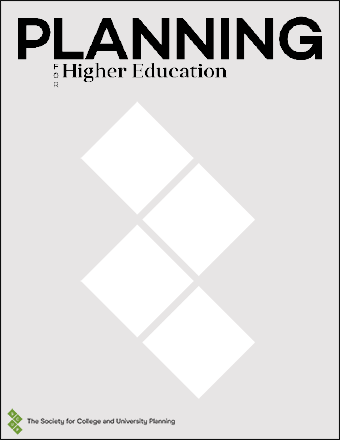- Integrated Planning
Integrated Planning
Integrated planning is a sustainable approach to planning that builds relationships, aligns the organization, and emphasizes preparedness for change.
- Topics
Topics
- Resources
Resources
Featured Formats
Popular Topics
- Events & Programs
Events & Programs
Upcoming Events
- Building Buy-in for Planning: Dealing With Resistance and Gaining Support
Online | March 11 – April 8 - Budgeting for Impact: A Working Group on Resource Planning in Higher Education
Online | Feb 5, Feb 19, March 5 - Cross-Functional Collaboration: Tools and Skills for Working Across Silos
Online | February 10, 17, 24
- Building Buy-in for Planning: Dealing With Resistance and Gaining Support
- Community
Community
The SCUP community opens a whole world of integrated planning resources, connections, and expertise.
- Integrated Planning
Integrated Planning
Integrated planning is a sustainable approach to planning that builds relationships, aligns the organization, and emphasizes preparedness for change.
- Topics
Topics
- Resources
Resources
Featured Formats
Popular Topics
- Events & Programs
Events & Programs
Upcoming Events
- Building Buy-in for Planning: Dealing With Resistance and Gaining Support
Online | March 11 – April 8 - Budgeting for Impact: A Working Group on Resource Planning in Higher Education
Online | Feb 5, Feb 19, March 5 - Cross-Functional Collaboration: Tools and Skills for Working Across Silos
Online | February 10, 17, 24
- Building Buy-in for Planning: Dealing With Resistance and Gaining Support
- Community
Community
The SCUP community opens a whole world of integrated planning resources, connections, and expertise.
 Planning for Higher Education Journal
Planning for Higher Education JournalColocating Dissimilar Academic Programs
A School of Nursing and a School of Engineering Align for Mutually Beneficial Outcomes From Volume 53 Number 2 | January–March 2025By Ed Stand, BArch, LEED BD+C, AIA, Richard S. Leddy, MBA, P.E., and Laura White, BArch, AIA, LEED AP, WELL APPlanning Types: Campus PlanningChallenges: Planning AlignmentTags: Academic Facility, External Collaboration / Partnerships, Facilities Design, Facilities Planning, Interdisciplinary Learning Environments, Medical / Allied Health Facility, Science / Engineering Facility, Shared Facilities
From Volume 53 Number 2 | January–March 2025By Ed Stand, BArch, LEED BD+C, AIA, Richard S. Leddy, MBA, P.E., and Laura White, BArch, AIA, LEED AP, WELL APPlanning Types: Campus PlanningChallenges: Planning AlignmentTags: Academic Facility, External Collaboration / Partnerships, Facilities Design, Facilities Planning, Interdisciplinary Learning Environments, Medical / Allied Health Facility, Science / Engineering Facility, Shared Facilities
Institutions referenced in this resource:
Hofstra UniversityAdministrators at colleges and universities across the country face mounting concerns over enrollment rates, curricular rigor, and climbing real estate costs. These challenges are particularly daunting for liberal arts institutions, many of which have pivoted or are pivoting to STEM programs out of necessity. Cross-disciplinary colocation strategies can enhance hands-on learning opportunities while optimizing spatial and financial resources. This article explores the planning approach to forming mutually successful partnerships between dissimilar academic programs through mission-oriented cross-functional collaboration, including examples of tools and processes for data-informed decision-making.
MEMBERS ONLY
Attention Members: Log in to access this item.Not a member? Join now to access this article and all journal articles for free. - Topics
- Topics


